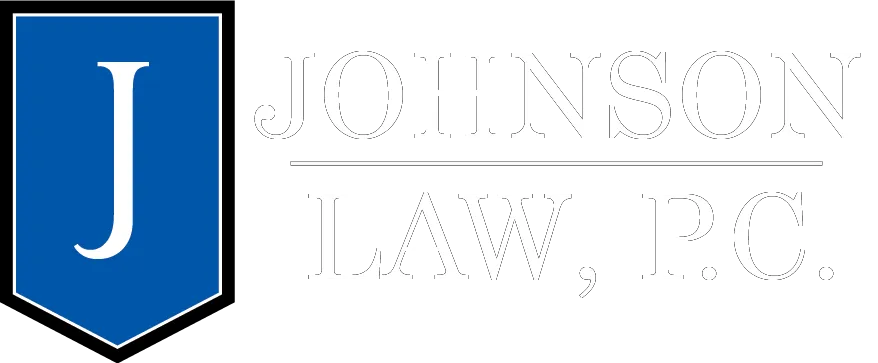Every Oregon License Plate Explained: Types, Rules, Costs, and Smart Picks

Every Oregon License Plate Explained: Types, Rules, Costs, and Smart Picks
Educational information only, not legal advice. Rules change—verify details with the Oregon DMV, relevant statutes/admin rules, and your local enforcement agency. If you have a specific legal question, consult an attorney.
Pick the Right Oregon Plate in Minutes—Avoid Tickets and Unnecessary Fees
Not sure if you need two plates, if a specialty design is worth the surcharge, or whether a placard beats a disabled plate? Choosing wrong can mean fix‑it tickets, delays at the DMV, and money wasted on fees you didn’t need to pay.
What you’ll get here:
- A plain‑English map of every Oregon plate category and who qualifies
- Display rules that keep you compliant (and readable to both people and ALPR)
- Fee basics and how surcharges stack over a 5‑year horizon
- A practical decision framework to choose standard, specialty, vanity, disabled, fleet/IRP, or collector—without hassle
Tip: If you’re in a hurry, jump to Section 20 for the decision flow and trade‑off matrix, then deep‑dive the section that fits your situation.
Quick Start: 60‑Second Chooser
- Personal vehicle, no special needs → Start with Standard Passenger (lowest cost, fastest).
- Want to support a cause and accept added fees → Specialty Plate (ensure a frame/rack won’t obscure characters).
- Want custom text → Vanity (expect content review and possible post‑issuance recall).
- Accessibility needs → Compare Disabled Plate vs. Placard (placard travels with the person).
- Business or multistate operation → Commercial or IRP/Fleet (maintain audit‑ready records).
- Historic/collector use only → Collector/Special Interest (limited‑use rules apply).
On this page
- First Principles
- Legal Framework
- Master Taxonomy
- Decision Framework
- Fees & Surcharges
- Application & Processing
- Display & Accessories
- Compliance Traps
- Disabled Parking
- Vanity Plates
- Specialty Plates
- Temporary Permits
- FAQs
1) First Principles: What a Plate Is For
Identification and legibility
- High-contrast, retroreflective backgrounds aid nighttime and low-light readability
- Character spacing and font design support human and machine reads
- Keep plates clean and undamaged; illegibility can be cited
Machine readability (ALPR)
- Automated readers perform best with high contrast and unobstructed views
- Glare, mud, tinted covers, and frames that block characters reduce read rates and can violate display rules
Authentication
- Serial formats, sticker placement (if applicable), and tamper-resistant construction
- Some states test digital validation options; Oregon primarily relies on stickers/registration records
2) Oregon Legal Framework (High-Level Map)
Administrative structure
- Titles, registration, and plates are administered by the Oregon DMV (ODOT)
- Display and legibility rules govern location, height, obstruction, and condition
Two-plate vs. one-plate
- Most passenger vehicles require both front and rear plates unless a specific exception applies
- Motorcycles and most trailers typically display a single rear plate
- Placement height and visibility rules apply; verify for specialty mounts or unique vehicle fronts
Transfer rules
- Understand plate-to-vehicle vs. owner transfer mechanics before you sell, gift, or move out of state
- Oregon allows some plate types to be transferred under conditions; others must stay with the vehicle
Enforcement
- Fix-it tickets can apply for display or sticker issues
- Chronic non-compliance can trigger fines or registration holds
3) Master Taxonomy of Oregon Plate Types
- Passenger plates
- Motorcycle and moped plates
- Trailer plates (utility, travel, boat trailers)
- Motorhome/RV plates
- Commercial and apportioned (IRP) plates
- Farm and special equipment plates
- Government and “exempt” plates
- Dealer and transporter plates
- Fleet plates
- Disabled parking plates vs. placards
- Special interest / antique / collector plates
- Personalized / vanity plates
- Specialty “cause” plates (charitable beneficiaries)
- Tribal plates (issued by tribes; reciprocity basics)
- Provisional/temporary permits and trip permits
For each category below: purpose, eligibility, format cues, fees, renewal cycle, usage limits, transferability, common pitfalls.
4) Standard Passenger Plates
- Purpose: Default plate for most passenger vehicles
- Eligibility: Most privately owned cars/SUVs/light trucks
- Visual cues: Oregon standard background; serial format follows current DMV issuance
- Fees:
- Base registration (varies by vehicle characteristics and rule updates)
- Standard plate fees (initial and replacement when needed)
- No charitable surcharge
- Renewal: Generally every two years; stickers show month/year when applicable
- Usage limits: No special restrictions beyond display/legibility rules
- Transfer: May be transferable subject to DMV rules; verify at the time of sale/vehicle change
- Pitfalls: Frame obstruction, incorrect sticker placement, damaged/illegible plates
5) Motorcycle and Moped Plates
- Size/mounting: Smaller form factor; rear display required; lighting must illuminate the plate at night
- Visibility: Keep clean; avoid angled/tucked mounts that impede legibility
- Personalization: Vanity availability varies; check DMV options
- Specialty options: Some specialty designs may be available; verify current list
- Pitfalls: Aftermarket mounts that tilt excessively or obstruct view; missing illumination
6) Trailer Plates
- Types: Utility, travel (camping), and boat trailers
- Registration:
- Utility trailers may have periodic or permanent options depending on weight/class
- Travel trailers typically follow periodic renewals
- Insurance/liability: Confirm your policy covers trailer operations; towing exposures differ from standalone vehicle coverage
- Pitfalls: Mismatched VIN/plate with towed trailer; unreadable plate mounted too low or obscured by cargo
7) RV/Motorhome Plates
- Passenger vs. commercial logic: Most personal-use RVs follow passenger-like rules; commercial use can alter requirements
- Toad/“dinghy” vehicles: Tow car behind motorhome typically has its own registration/plates; verify towing equipment legality
- Storage vs. active use: Consider SORN-like scenarios in other states; in Oregon, ensure registration is current when used on public roads
- Pitfalls: Assuming RV status relaxes display or renewal rules—still subject to legibility and timely renewal
8) Commercial and Apportioned (IRP) Plates
- Who qualifies: Vehicles engaged in commercial transport, especially multistate operations
- IRP basics: International Registration Plan apportions fees based on distance operated in member jurisdictions
- Fees: Based on weight class and apportionment; documentation and mileage reporting are critical
- Fleet management: Maintain accurate trip records; be audit-ready
- Pitfalls: Misclassifying vehicles; weak mileage logs; late filings
9) Farm, Special Equipment, Tow/Recovery
- Eligibility: Proof of agricultural use for farm plates; special equipment definitions apply for implements/limited-use vehicles
- Restrictions: Geographic and operational limits may apply (e.g., farm-to-market radius)
- Documentation: Keep eligibility proof current; have it available during stops/inspections
- Pitfalls: Using restricted plates for general commuting or non-qualifying business use; can trigger citations
10) Government and Exempt Plates
- Visual markers: Specific color schemes/serials for city, county, state, and federal vehicles
- Treatment patterns: Some tolling/parking exceptions may apply to government fleets based on policy, not plate alone
- Limits: Personal use is restricted; policies govern take-home and off-duty operation
- Pitfalls: Assuming blanket immunity; policies vary and misuse can result in discipline or citations
11) Dealer and Transporter Plates
- Use cases: Inventory movement, demonstration drives, transfers between lots
- Record-keeping: Log who, when, where; align with insurance coverage for demos and employee use
- Violations: Lending plates outside policy, non-inventory vehicle use, inadequate logs
- Pitfalls: Allowing customers to operate beyond permitted contexts; insufficient proof at roadside stops
12) Fleet Plates
- Value: Consolidated renewals and simplified identification for larger operators
- When it helps: Multiple vehicles with synchronized renewal cycles and common ownership
- Resale/de-fleet: Have a workflow to remove fleet identifiers and handle plate retention/transfer properly
- Pitfalls: Losing track of cycle dates; mixing fleet and non-fleet processes
13) Disabled Parking: Plates vs. Placards
- Eligibility: Medical certification required; DMV evaluates based on statutory criteria
- Plates vs. placards:
- Plates embed the privilege into the vehicle’s registration
- Placards can move between vehicles when the eligible person is present
- Privileges: Access to designated spaces and certain time-limit exemptions (verify local signage/enforcement)
- Misuse: Lending to someone not transporting the eligible person can result in citations and penalties
14) Special Interest / Antique / Collector
- Age thresholds: Vehicle age and original configuration often define eligibility
- Use restrictions: Typically exhibitions, parades, and occasional travel—not daily commuting
- YOM (Year-of-Manufacture): Where allowed, original plates must meet condition/verification standards
- Collector value: Ensure compliance while protecting the vehicle’s historic authenticity
- Pitfalls: Overuse outside permitted contexts; poor documentation of eligibility
15) Personalized / Vanity Plates
- Composition rules: Character counts and allowed symbols; spacing may be conserved or normalized on the plate
- Content review: Profanity filters, look-alikes/homophones for prohibited terms, adjudication procedures
- Appeals and recalls: Some combinations can be denied or recalled after issuance
- Practical tips:
- Favor legibility for human readers and ALPR systems
- Remember resale impact; personalized plates don’t always make sense if you change vehicles frequently
- Pitfalls: Assuming approval equals permanence; post-issuance review can still revoke plates
16) Specialty “Cause” Plates
- Donation model: Per-plate surcharges fund designated beneficiaries (conservation, education, heritage, public safety, culture)
- Total cost: One-time issuance surcharge plus recurring surcharges possible; add to base registration
- Visibility: Busy designs can conflict with plate frames and bike racks; watch for character obstruction
- Switching/retention: Rules govern whether you can keep a specialty design when selling or changing vehicles
- Pitfalls: Assuming refunds for partial periods or surcharges—verify DMV policy
17) Tribal Plates Overview
- Issuance: Typically issued by tribal authorities for eligible members/vehicles
- Reciprocity: Oregon law enforcement recognizes plates subject to intergovernmental agreements
- Travel: Off tribal lands, general traffic laws apply; carry proof of registration/insurance per applicable rules
- Pitfalls: Misunderstanding reciprocity; verify eligibility and jurisdictional recognition
18) Stickers, Decals, and Validation
- Placement: Follow DMV placement guidance for month/year stickers
- Replacement: Report damaged or stolen stickers; follow identity verification steps to reissue
- Theft prevention: Affix on clean, dry plates; consider tamper-resistant techniques where permitted
- Pitfalls: Misplaced stickers, obscured by plate frames, or applied to damaged plates
19) Temporary Permits and Trip Permits
- When allowed: Newly purchased vehicles, out-of-service situations, awaiting title/registration
- Display: Paper tags must be unobstructed and readable; protect from weather while remaining visible
- Fraud red flags: Altered expiration dates or mismatched VIN; enforcement trends focus on visibility and authenticity
- Pitfalls: Expired or unreadable temp permits; mismatched vehicle information
20) Choosing the Right Plate: A Decision Framework
Inputs:
- Vehicle type and intended use (personal, commercial, farm, fleet)
- Budget and tolerance for surcharges
- Desire to support a cause or personalize a message
- Accessibility needs (plates vs. placards)
- Administrative burden (eligibility proofs, audits, renewals)
Flow (textual):
- Start with default passenger →
- If historic/collector purpose → consider Special Interest/Collector →
- If supporting a cause → consider Specialty (check surcharges/design visibility) →
- If personalization matters → consider Vanity (check policies/recall risk) →
- If commercial/multistate → consider Commercial/IRP/Fleet →
- If disability access needed → compare Plate vs. Placard
Trade-off matrix (qualitative):
| Option | Cost Over Base | Eligibility Complexity | Processing Time | Resale Impact |
|---|---|---|---|---|
| Standard Passenger | Low | Low | Fast | Neutral |
| Specialty Cause | Medium–High (surcharges) | Low–Medium | Medium | Neutral |
| Vanity | Medium | Medium (review) | Medium | Potentially negative |
| Collector/Special Interest | Low–Medium | Medium–High | Medium | Positive for eligible vehicles |
| Fleet | Admin trade-off | Medium–High | Medium | Neutral |
| IRP (Apportioned) | High (by use/weight) | High | Longer | Neutral |
| Disabled Plate | Low | Medium (medical proof) | Medium | Neutral |
21) Fees, Surcharges, and Where the Money Goes
- Base registration: Determined by Oregon rules; can vary by vehicle characteristics and rule changes over time
- Plate fees: Standard vs. specialty issuance and replacement fees
- Charitable surcharges: Specialty plates channel per-plate amounts to beneficiaries; some recur at renewal
- Total cost of ownership: Consider 5-year horizon to understand how surcharges accumulate
- Note: Fee amounts and structures change; check current DMV fee tables before applying or switching plate types
22) Application and Processing
- Channels: Online (where eligible), by mail, or in-person at DMV field offices
- Required documents: ID, proof of ownership, VIN verification (as needed), insurance verification per Oregon rules
- Timelines: Standard processing vs. special plates (may be longer)
- Rejections: Common reasons include incomplete forms, eligibility proof gaps, or payment issues
- Replacements: Lost, stolen, or damaged plates can be replaced—file a police report if theft is suspected
23) Display, Frames, and Accessories
- Frames/covers: Frames cannot obstruct any characters or stickers; tinted/reflective covers often reduce legibility and can violate display rules
- Accessories: Bike racks and cargo carriers must not block the plate; relocate mounts or use auxiliary mounts when allowed
- Security: Anti-theft screws are helpful if they don’t impede lawful removal by an owner/insurer
24) Compliance Traps and How to Avoid Them
- Illegible plates: Corrosion, peeling reflective sheeting, mud, snow, or physical damage
- Obstruction: Frame or cover overlapping characters or stickers; bike racks blocking view
- Mismatch: Plate doesn’t match the vehicle’s registration; signs of “cloned” plates
- Moves: When moving to/from Oregon, follow deadlines to retitle/register; don’t drive on expired out-of-state tags
See also: Oregon Recording Laws: Audio & Video Evidence and Don’t Lose Your Evidence (Spoliation).
25) Enforcement Technology and Privacy
- ALPR basics: Cameras capture characters quickly; reflective sheeting and contrast matter
- False positives: Glare, angles, damage, or novelty frames increase error risk
- Data handling: Retention and sharing policies vary—check agency/municipal rules
- Practical privacy: Keep plates clean, avoid prohibited covers, and understand how design choices affect machine reads
26) Insurance and Tolling Intersections
- Tolling: License plate tolling requires accurate reads; misreads have dispute workflows
- Rideshare/delivery: Commercial use can trigger different registration/insurance rules
- Claims: Plate data and camera reads can appear in investigations; ensure information matches your registration
27) Edge Cases
- Out-of-state students and active-duty military: Special residency/registration considerations—verify eligibility and deadlines
- Kit cars and reconstructed vehicles: Documentation-heavy; check inspection and plate options
- EVs and alternative fuel: Additional fees or notations may apply over time; confirm current policies
- Seasonal storage: Ensure registration is valid when returning to road use
28) Myths vs Facts
- “Specialty plates get you out of tickets.” → False. Enforcement focuses on behavior and compliance, not plate style
- “Vanity plates always cost more every year.” → Often more than standard due to fees/review; amounts vary by program
- “You can transfer any plate to any vehicle.” → Not always; transfers are governed by plate type and DMV rules
- “Disabled plate equals free parking everywhere.” → No; privileges are specific and signed rules still control
31) Tables and Checklists
Comparison Table (at a glance)
| Plate Type | Purpose | Eligibility | Fees | Renewal | Transfer | Restrictions |
|---|---|---|---|---|---|---|
| Passenger | Default use | Most passenger vehicles | Base | 2 years | Conditional | Standard rules |
| Specialty | Support causes | Any eligible passenger vehicle | Base + surcharge | 2 years | Conditional | None beyond standard |
| Vanity | Personal text | Subject to review | Base + vanity fee | 2 years | Conditional | Content restrictions |
| Disabled | Parking privileges | Medical certification | Base | 2 years | Conditional | Proper use only |
| Collector | Historic | Age/configuration | Reduced/varies | Varies | Conditional | Limited use |
| Commercial | Business use | Commercial operations | Weight/structure | Periodic | Business policy | Business rules |
| IRP | Multi-state | Apportioned fleets | Apportioned | Periodic | Fleet rules | Compliance audits |
Application Checklists
Before Applying:
- Confirm eligibility (vehicle and applicant)
- Gather required IDs, proofs, VIN/insurance docs
- Decide on plate type (standard vs. specialty vs. vanity)
- Review fees (base + surcharges) and processing time
During Application:
- Complete accurate forms (spelling, addresses, VIN)
- Attach medical/collector/farm proofs, if applicable
- Pay the correct amount and keep a copy of receipts
- Ask about processing timelines and delivery
After Issuance:
- Install plates correctly; place stickers as directed
- Photograph installed plates (for your records)
- Set a renewal reminder (calendar, email)
- Store proofs with your registration/insurance
Replacement Events (Lost/Stolen/Damaged):
- File police report for theft
- Bring ID/ownership proof for replacements
- Ask about fraud flags if you suspect cloning
- Update plate number in insurance records
32) FAQs
Do I need a front plate in Oregon?
Most passenger vehicles require both front and rear plates unless exempt—verify for your vehicle type and any approved exception.How much do Oregon specialty plates cost?
You’ll pay base registration plus surcharges that fund the specialty’s beneficiary. Some surcharges recur at renewal.Can I keep my specialty plate if I sell the car?
Some plates can be transferred under conditions; check DMV rules before selling or de-fleeting.Are vanity plates reviewed for content?
Yes. Oregon screens for prohibited content and can recall plates post-issuance.Should I choose a disabled plate or a placard?
It depends on how many vehicles you ride in and your needs. Placards move with the eligible person; plates do not.What if my plate becomes unreadable?
Replace damaged or illegible plates promptly. Obstructed or unreadable plates can lead to citations.
35) Closing
Choose by function first, then design. If cost or compliance is a concern, start with standard passenger plates. If you want to support a cause, weigh the surcharge and legibility. If accessibility is needed, evaluate plate vs. placard based on how you travel.
If you have questions about Oregon traffic or injury issues tied to your vehicle paperwork—or you’re facing a citation after a crash—speak with an attorney who practices in Oregon.



